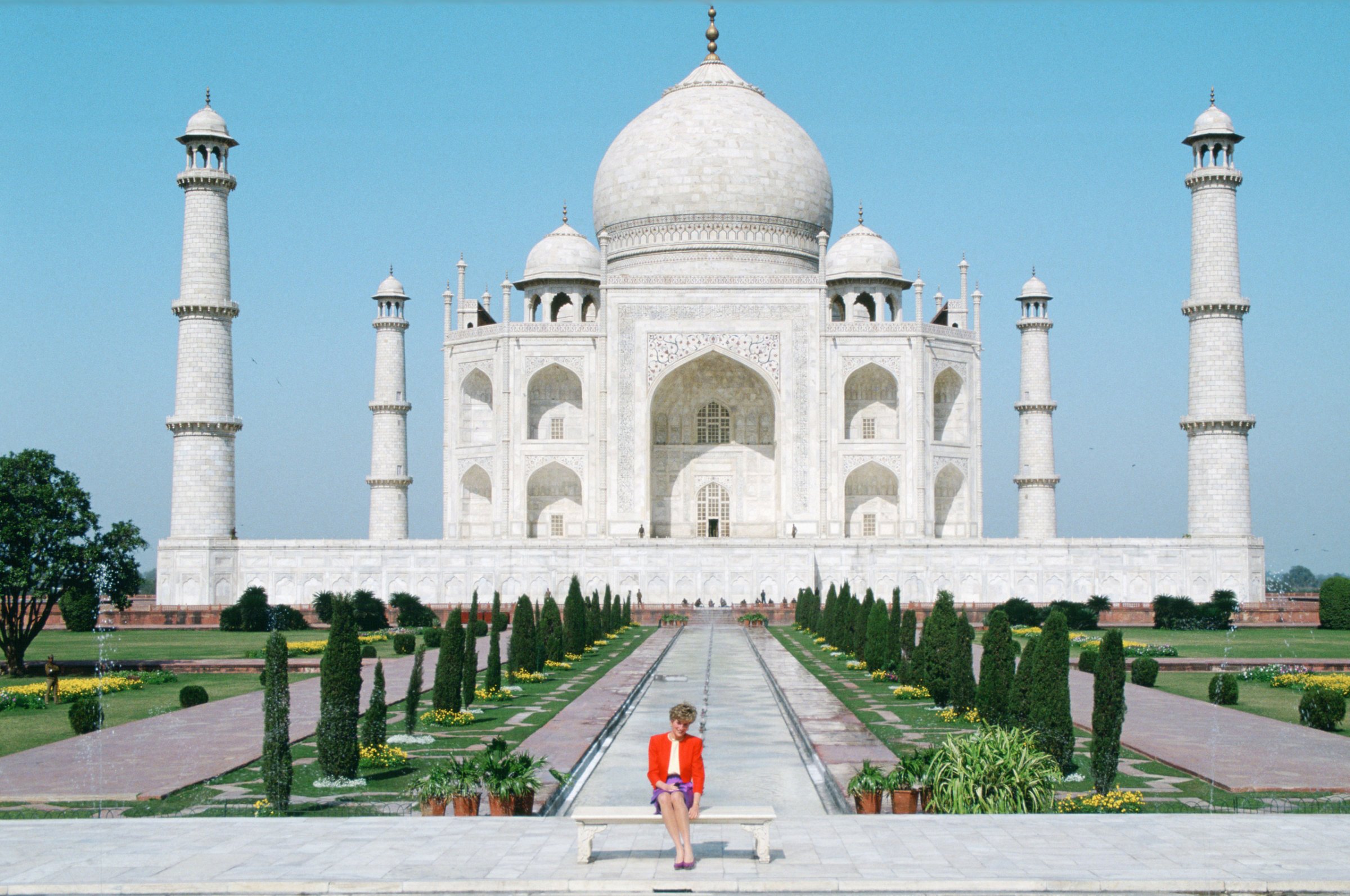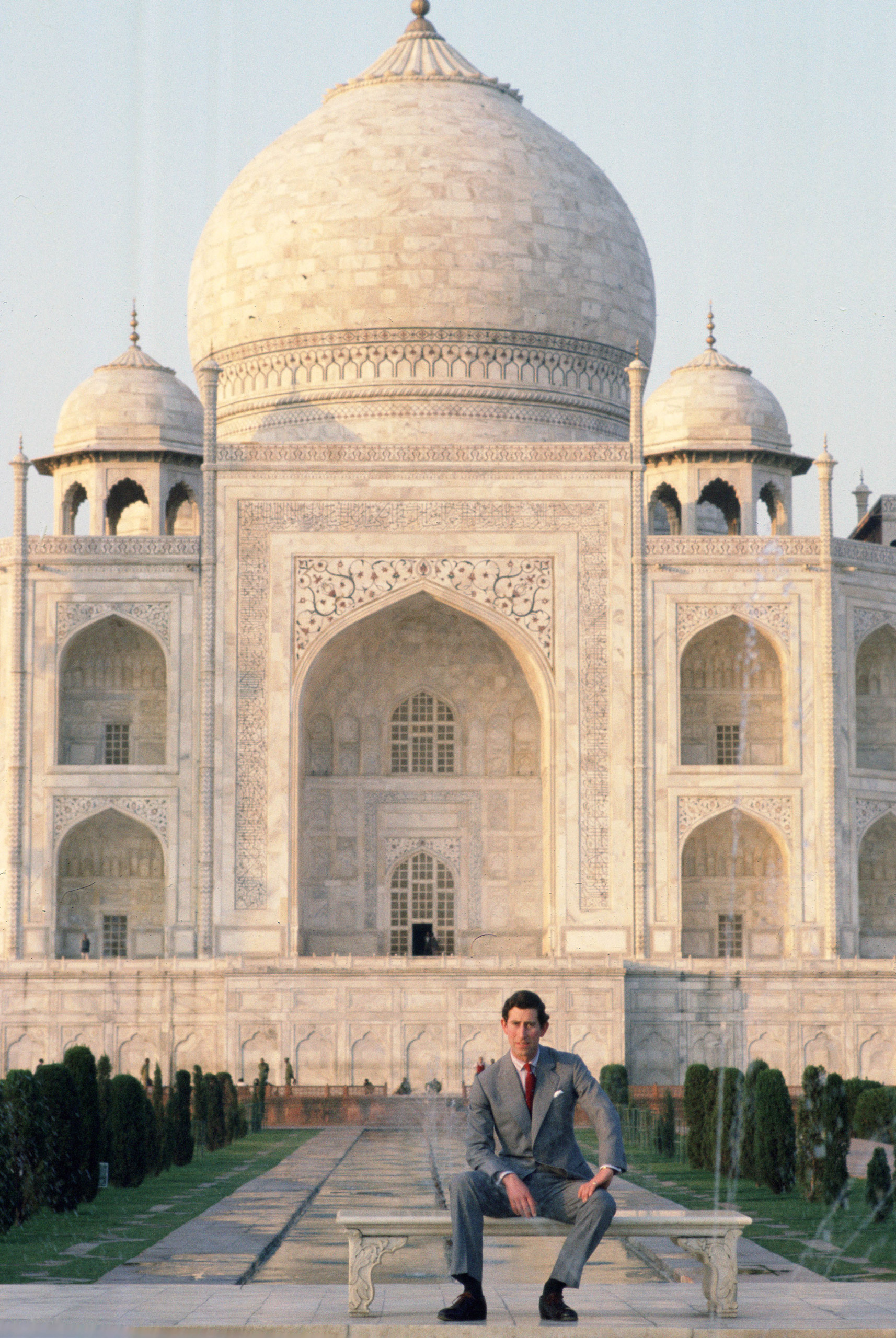
Prince William and Kate Middleton will head to India on Sunday for their first official visit to the country as a couple. The final day of their tour is scheduled to include a trip to the Taj Mahal — which means this is more than just any official visit.
The Duke and Duchess of Cambridge have repeatedly nodded to the legacy left by William’s mother, Princess Diana, says Jessica Morgan, co-author of The Royal We. For example, Kate’s engagement ring was worn by Diana, Princess Charlotte’s middle name is Diana, and the outfit Kate wore out of the hospital with Prince George looked extremely similar to what Diana wore when William was born. But that legacy also includes the failed marriage of Diana and Prince Charles, and this India trip is sure to elicit a specifically sour look back at the shattered royal relationship.
It was Princess Diana’s visit to the Taj Mahal in February of 1992 that resulted in a photo of the Princess sitting alone on a bench, an image that seemed to turn rumors into reality around the couple’s impending divorce. The solo photo of the princess was just what the public needed to confirm their suspicions that the marriage was indeed over.

PEOPLE reports that when Diana was asked by a reporter about her feelings toward the world-famous mausoleum, she replied, “It was a fascinating experience — very healing.” When pressed to explain, she smiled and said, “Work it out for yourself.”
Diana and Charles had been married in 1981, and about 10 years later the separation rumors started flying. A 1992 TIME cover story cast light on the fact that the two seemed “ready to resign themselves to living separate lives, maintaining their marriage in name only.” (Their separation came in December of ’92 with a formal divorce in 1996, just one year before the princess was killed in a car accident in Paris.)
Gossip about the couple took its toll, as the story explained. A book detailed Diana’s depression, bulimia, suicide attempts and estrangement from Charles and, as TIME reported, “a tape surfaced purporting to be a conversation between her and a too-close friend, James Gilbey, usually described as a man-about-town, and the tabloids began howling.” This was swiftly followed up with what was dubbed “Camillagate,” the potential affair between Prince Charles and Camilla Parker-Bowles.
TIME’s 1996 cover story about the divorce called the marriage exactly what it was: a “fairy tale that was too good to be true.”
The separation and subsequent divorce of Charles and Diana were historically significant within the monarchy, but Morgan adds that the breakdown of that relationship was particularly poignant as royals-watchers felt like they had been through Princess Diana and Prince Charles’ relationship from the very beginning.
“To realize it was not going well was so soap operatic, and that iconic picture is sort of the period at the end of the sentence,” she says. “It was very sad to see that this woman didn’t have the love we thought that she had.”
Get your history fix in one place: sign up for the weekly TIME History newsletter
William and Kate have had the chance to reestablish what was once thought of as a broken royal family, and it seems likely that they will capitalize on that fact by posing for a photo in front of the Taj Mahal—once a strong symbol of sorrow for Charles and Diana’s marriage.
“William is very protective of his mother’s memory,” Morgan says. “They make a lot of references to her and are very thoughtful about keeping her memory alive and it’ll be sweet to see them happy together in a place where his mother was so sad.”
More Must-Reads From TIME
- The 100 Most Influential People of 2024
- How Far Trump Would Go
- Scenes From Pro-Palestinian Encampments Across U.S. Universities
- Saving Seconds Is Better Than Hours
- Why Your Breakfast Should Start with a Vegetable
- 6 Compliments That Land Every Time
- Welcome to the Golden Age of Ryan Gosling
- Want Weekly Recs on What to Watch, Read, and More? Sign Up for Worth Your Time
Contact us at letters@time.com